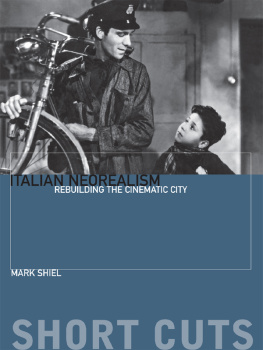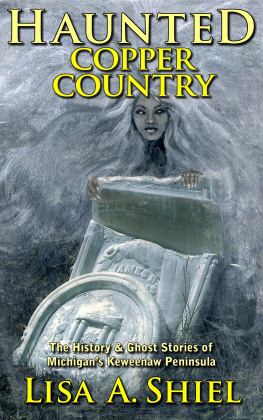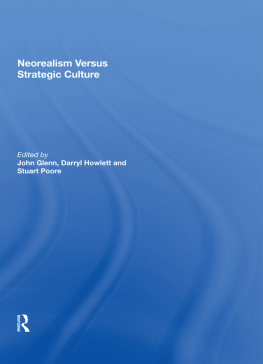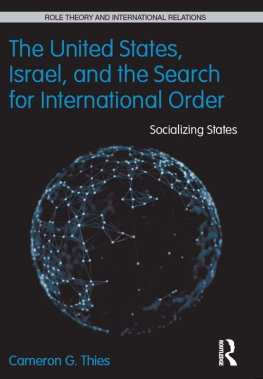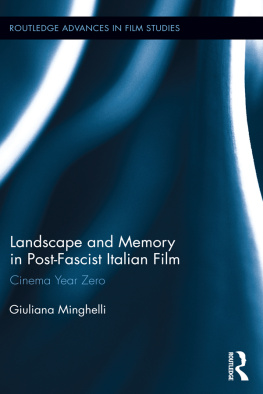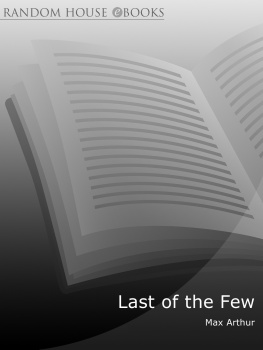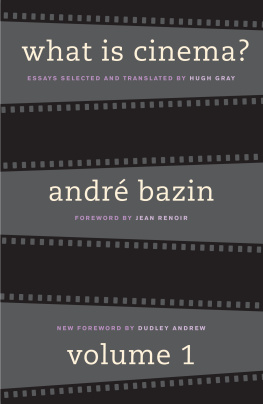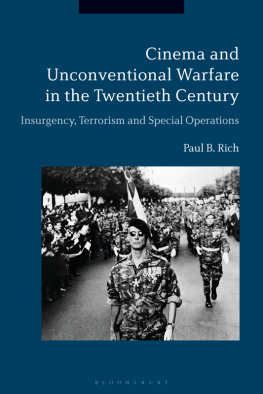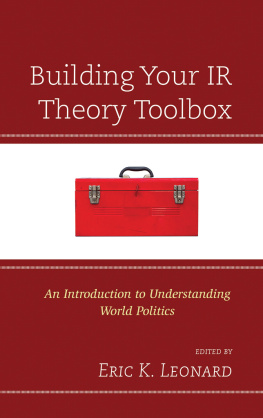SHORT CUTS
INTRODUCTIONS TO FILM STUDIES
OTHER TITLES IN THE SHORT CUTS SERIES
THE HORROR GENRE: FROM BEELZEBUB TO BLAIR WITCH Paul Wells
THE STAR SYSTEM: HOLLYWOODS PRODUCTION OF POPULAR IDENTITIES Paul McDonald
SCIENCE FICTION CINEMA: FROM OUTERSPACE TO CYBERSPACE Geoff King and Tanya Krzywinska
EARLY SOVIET CINEMA: INNOVATION, IDEOLOGY AND PROPAGANDA David Gillespie
READING HOLLYWOOD: SPACES AND MEANINGS IN AMERICAN FILM Deborah Thomas
DISASTER MOVIES: THE CINEMA OF CATASTROPHE Stephen Keane
THE WESTERN GENRE: FROM LORDSBURG TO BIG WHISKEY John Saunders
PSYCHOANALYSIS AND CINEMA: THE PLAY OF SHADOWS Vicky Lebeau
COSTUME AND CINEMA: DRESS CODES IN POPULAR FILM Sarah Street
MISE-EN-SCNE: FILM STYLE AND INTERPRETATION John Gibbs
NEW CHINESE CINEMA: CHALLENGING REPRESENTATIONS Sheila Cornelius with Ian Haydn Smith
SCENARIO: THE CRAFT OF SCREENWRITING Tudor Gates
ANIMATION: GENRE AND AUTHORSHIP Paul Wells
WOMENS CINEMA: THE CONTESTED SCREEN Alison Butler
BRITISH SOCIAL REALISM: FROM DOCUMENTARY TO BRIT GRIT Samantha Lay
FILM EDITING: THE ART OF THE EXPRESSIVE Valerie Orpen
AVANT-GARDE FILM: FORMS, THEMES AND PASSIONS Michael OPray
PRODUCTION DESIGN: ARCHITECTS OF THE SCREEN Jane Barnwell
NEW GERMAN CINEMA: IMAGES OF A GENERATION Julia Knight
EARLY CINEMA: FROM FACTORY GATE TO DREAM FACTORY Simon Popple and Joe Kember
MUSIC IN FILM: SOUNDTRACKS AND SYNERGY Pauline Reay
FEMINIST FILM STUDIES: WRITING THE WOMAN INTO CINEMA Janet McCabe
MELODRAMA: GENRE STYLE SENSIBILITY John Mercer and Martin Shingler
FILM PERFORMANCE: FROM ACHIEVEMENT TO APPRECITATION Andrew Klevan
NEW DIGITAL CINEMA: REINVENTING THE MOVING IMAGE Holly Willis
THE MUSICAL: RACE, GENDER AND PERFORMANCE Susan Smith
FILM NOIR: FROM BERLIN TO SIN CITY Mark Bould
TEEN MOVIES: AMERICAN YOUTH ON SCREEN Tim Shary
DOCUMENTARY: THE MARGINS OF REALITY Paul Ward
THE NEW HOLLYWOOD: FROM BONNIE AND CLYDE TO STAR WARS Peter Krmer
WAR CINEMA: HOLLYWOOD ON THE FRONT LINE Guy Westwell
ITALIAN NEOREALISM
REBUILDING THE CINEMATIC CITY
MARK SHIEL
WALLFLOWER
LONDON and NEW YORK
A Wallflower Book
Published by
Columbia University Press
Publishers Since 1893
New York Chichester, West Sussex
cup.columbia.edu
Copyright Mark Shiel 2006
All rights reserved.
E-ISBN 978-0-231-85029-2
A complete CIP record is available from the Library of Congress
ISBN 978-1-904764-48-9 (pbk. : alk. paper)
ISBN 978-0-231-85029-2 (e-book)
A Columbia University Press E-book.
CUP would be pleased to hear about your reading experience with this e-book at .
CONTENTS
In researching and writing this book, I have benefited greatly from the wisdom and advice of Geoffrey Nowell-Smith, of Queen Mary, University of London, and Chris Wagstaff, of the University of Reading. Both read drafts of the manuscript and responded with thoughtful insights and positive criticisms which allowed me to fine-tune my argument and interpretations. Thomas Hines, of the School of Architecture, University of California, Los Angeles, applied his expertise to reading and commenting on sections of the manuscript pertaining to the Italian city and its architecture. Nicholas Watkins, of the University of Leicester, shared his thoughts with me and, very kindly, a draft copy of some of his recent writing on the issue of fascism and the monument. Additionally, I have greatly appreciated discussions about cinematic time and Rossellini with Laura Mulvey, at Birkbeck College, and about Antonioni with Peter Wollen, at UCLA. Vincent Guigeno and Andr Gunthert, at the Institut national dhistoire de lart, Paris, and Reinhold Viehoff, of Martin-Luther-Universitt, Halle-Wittenberg, invited me to give papers on my work in progress on Antonioni and the city. Yoram Allon at Wallflower Press has been an understanding and efficient editor as the project has taken shape. My father, Diarmuid Shiel, offered opinions and encouragement along the way. Alyce Mahon, my ossessione, supported me in more ways than one, and shared some memorable flnerie around Rome.
Authors note: titles of films are given in English where the film received a significant English-language release and the English-language title has since become well-established in film scholarship. All such films are given with their original title in parentheses on their first citation in the text. Otherwise films are given their original titles only.
Mark Shiel
Kings College, University of London
January 2006
Few moments in the history of cinema have been as hotly debated in their day and by succeeding generations as the moment of Italian neorealism in Italy after World War Two. Most critics and historians agree that neorealism was a watershed in which realism emerged for a time as the dominant mode of Italian cinema, with decisive impacts on the ways in which films would be made and thought about in Italy and worldwide for generations. One of the most important ways of thinking about neorealism has been to see it as a moment of decisive transition in the tumultuous aftermath of world war which produced a stylistically and philosophically distinctive cinema that achieved a limited but influential popularity from the mid-1940s until some time in the early or late 1950s, depending on the flexibility with which one uses the term: for example, from Roberto Rossellinis Rome, Open City (Roma, citt aperta, 1945) to Vittorio De Sicas Umberto D (1952), or from Luchino Viscontis Ossessione (1943) to Federico Fellinis The Nights of Cabiria (Le notti di Cabiria, 1957). In particular, neorealism marked a significant stage in the transformation of cinema from the classical forms which dominated in Europe and in the US prior to World War Two to the modernist art cinemas which came to dominate in Europe after the war and which had considerable impact and influence on Hollywood too from the 1950s to the 1970s.
Neorealism is also often thought of not so much as a particular moment, defined by starting and ending dates, but as a historically- and culturally-specific manifestation of the general aesthetic quality known as realism which is characterised by a disposition to the ontological truth of the physical, visible world. From this perspective, the realism of Italian neorealism manifested itself in a distinctive visual style. This was typified by a preference for location filming, the use of nonprofessional actors, the avoidance of ornamental mise-en-scne, a preference for natural light, a freely-moving documentary style of photography, a non-interventionist approach to film directing, and an avoidance of complex editing and other post-production processes likely to focus attention on the contrivance of the film image. Not all neorealist films employed all of these strategies, especially in the 1950s when neorealism became increasingly concerned with subjective experience, but most of these strategies are evident in all neorealist films. The perception of neorealism as visual truth is closely identified with the influential critical position of Andr Bazin who, more than any other non-Italian, argued in favor of neorealism as a cinematic agenda, thinking of it as a cinema of fact and reconstituted reportage (1971a: 20, 37).
The sense of neorealism as visual truth coincides and sometimes clashes with another sense of neorealism as a sentiment of ethical and political commitment a social realism which motivated not only filmmakers but writers such as Elio Vittorini and Italo Calvino, painters such as Renato Guttuso and Aldo Borgonzoni, photographers such as Mario De Biasi and Federico Patellani, and, as we shall see in chapter three, architects such as Ludovico Quaroni and Mario Ridolfi. Neorealist cinema has often been characterised as what Mira Liehm calls an aesthetics of rejection (1984: 132) in which the visual style, mythology, politics and working methods of fascist-era cinema were thrown out. In their place, neorealist filmmakers demonstrated a commitment through visual realism to making known the lot of ordinary, everyday Italians, especially the working class. They were inspired by leftist politics, especially the agendas of the Italian Communist Party (PCI) and Socialist Party (PSI), and by the determination to create a new and better Italy after the degradation and barbarity of fascism and in spite of the conservative tendencies of the mainstream of Italian political life, represented by the Catholic Church and the Christian Democrat (DC) party. Especially after 1948, the latter was the dominant force in political life.


